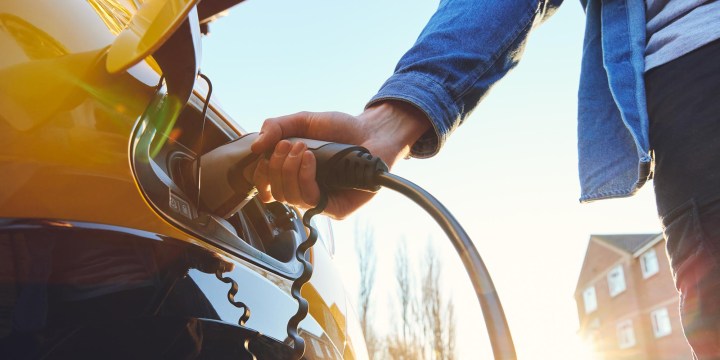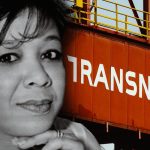MOTORING
Automotive Business Council takes lead on new electric vehicles in SA as DTIC dawdles

Waiting for the government will be the death of the local industry, says Naamsa. Now it is taking decisive action on new electric vehicles to secure the future of South Africa’s automotive industry.
The Automotive Business Council is not waiting for the Department of Trade, Industry and Competition (DTIC) to take the lead on new energy vehicles (NEVs). Also known as the National Association of Automobile Manufacturers of South Africa (Naamsa), it plans to release the industry’s thought leadership discussion document on NEVs by the end of this month, to stimulate action and stave off future threats to the local automotive sector.
On 18 May 2021, the DTIC released a green paper on NEVs in the country after engagements dating back three years, to develop a roadmap for local production of EVs — a year and a half down the line, despite assurances that the issue was a DTIC priority.
The government should have, but failed to, publish a White Paper late last year to outline strategies and incentives for NEVs.
A year after that deadline, in October 2022, at the council’s SA Auto Week, DTIC Minister Ebrahim Patel said the government hoped to do so in February 2023.
The industry has reason to lose sleep over the delays. They are putting the future of the local automotive sector at risk because it exports about two-thirds of all vehicles and components to more than 150 countries, with the biggest markets in Britain and the UK.
Europe plans to ban sales of internal combustion vehicles by 2035, which would cut off South Africa’s biggest market and put the livelihoods of millions at risk.
The sector contributes 4.3% to GDP [2.4% manufacturing and 1.9% retail]. In 2021, it exported vehicles and automotive components worth about R207.5-billion, or 12.5% of SA’s total.
It also accounts for 17.3% of the country’s manufacturing output, which, judging by the DTIC’s slothful dealings, must seem like no biggie. If the rand falls, we just pick it up again, right?
Slow-mo
In October, Naamsa CEO Mikel Mabasa called for the stimulation of NEVs in the SA market as “soon as possible”, as SA’s movement on NEV legislation was “painfully slow”.
“We are very concerned that we’ll have to play catch-up as a country in relation to where other markets are at…
“We’ve not seen very meaningful progress in relation to finalisation of that White Paper.
“Naamsa and the automotive industry, broadly speaking, are currently working on a discussion document on [NEVs] for South Africa, which we hope will obviously contribute meaningfully in the drafting of the South African White Paper.”
Proactively lead
That discussion document was the industry’s attempt to proactively lead on the issue.
Mabasa said that the automotive industry had been discussing and consulting extensively during the past 12 months on the country’s path to NEVs.
“The South African automotive industry appreciates the importance of working diligently to contribute to the decarbonisation of road transport in support of achieving carbon neutrality by 2050. We also recognise that no single government policy or industry commitment alone will achieve this ambitious goal.
“We must work collaboratively — at all levels of government and across all economic sectors — to identify the range of approaches necessary to establish sustainable pathways to carbon neutrality across sectors and the unique circumstances of the South African economic landscape.”
South African-based original equipment manufacturers (OEMs) compete with their overseas sister plants within the global OEMs’ production network. Decisions affecting plants need to be taken at least three years before the start of production.
These are influenced by government support initiatives to lower the cost of production and stimulate demand; green and low-cost energy; investment and infrastructure support, and competitiveness with other international plants.
“Logically, South African OEMs would require at least similar support as their overseas sister plants in order to compete equally for plant decisions. It is for this reason that the industry has proactively worked on its proposals, which will be shared with other social and business partners in order to accelerate our NEV roadmap without further delay.
“It is clear that NEV transition support is urgently required for positive plant decisions to be taken, because OEMs require a lead time of at least three to four years to motivate to their parent companies before any potential production could start, and to align with existing production cycles,” Mabasa said.
Mabasa said South Africa is at risk of losing more than 50% of its production volume from July 2025 to 2035, due to the ICE (internal combustion engine) banning in almost all European countries.
November’s new vehicle numbers
On a positive note, the council said the new vehicle market had now registered its eleventh consecutive month of year-on-year growth.
Aggregate domestic new vehicle sales last month, at 49,413 units, reflected an increase of 7,618 units, or 18.2%, on the 41,795 vehicles sold in November 2021.
Export sales were up 13,479 units — 64.7% YoY — to 34,310 units in November 2022.
Of the total reported industry sales of 49,413 vehicles, 39,998 units (81%) represented dealer sales, 14.7% represented sales to the vehicle rental industry, 2.3% sales to government and 2% to industry corporate fleets.
New passenger car sales increased by 16.9%, to 32,859 units. The car rental industry supported the new passenger car market during the month and accounted for 20% of sales.
Visit Daily Maverick’s home page for more news, analysis and investigations
Domestic sales of new light commercial vehicles, bakkies and minibuses were at 13,477 units over the period — an increase of 2,323 units, or 20.8%. Sales of medium and heavy truck segments were 900 and 2,177 units respectively, a hike of 17.5%.
Last month, 34,310 units reflected a year-on-year increase of 13,479 vehicles. In the year to date, vehicle exports were 17.9% ahead of the corresponding period in 2021.
Naamsa said the new vehicle market performed well despite negative economic pressures, rolling blackouts, high fuel prices, a weak economy and ongoing stock supply shortages.
Dealers also saw relatively strong sales of new motor vehicles, which came as a “pleasant surprise” to the local motor industry and dealer networks, said Mark Dommisse, chairperson of the National Automobile Dealers’ Association.
“We were expecting a similar market to October, considering the negatives affecting the economy and growing political uncertainty in the country, but consumers have once again proved us wrong.
“November’s tally of 49,413 units showed an improvement of nearly 3,500 sales from just one month ago and represented a significant 18.2% increase on the number of units sold in the same month last year.
“This is most heartening for all sectors of the industry.” BM/DM

















 Become an Insider
Become an Insider
Comments - Please login in order to comment.